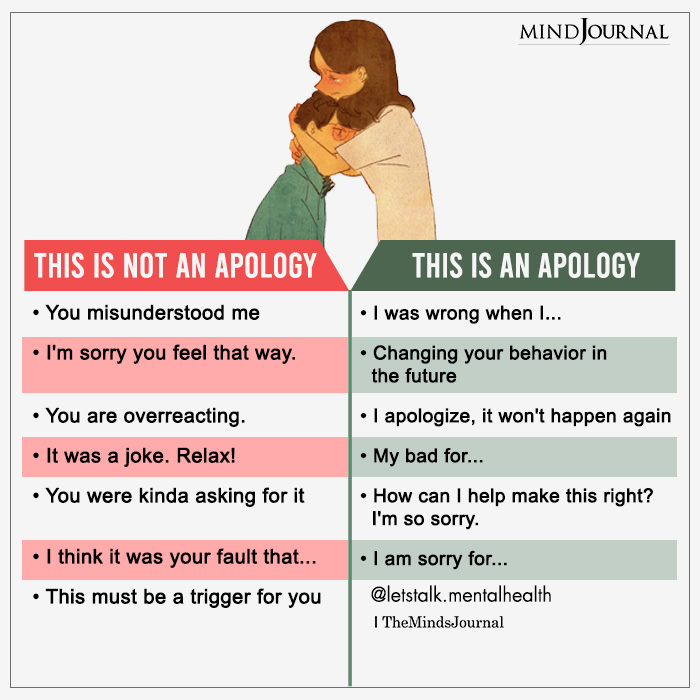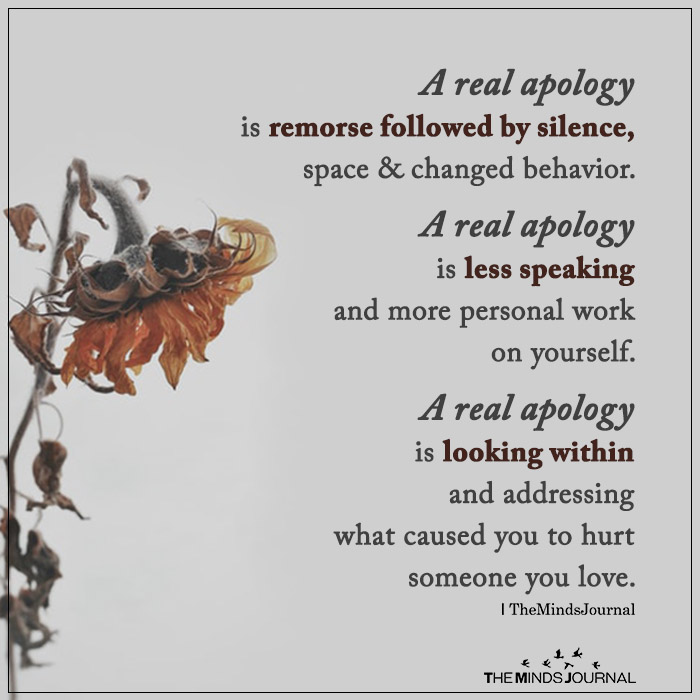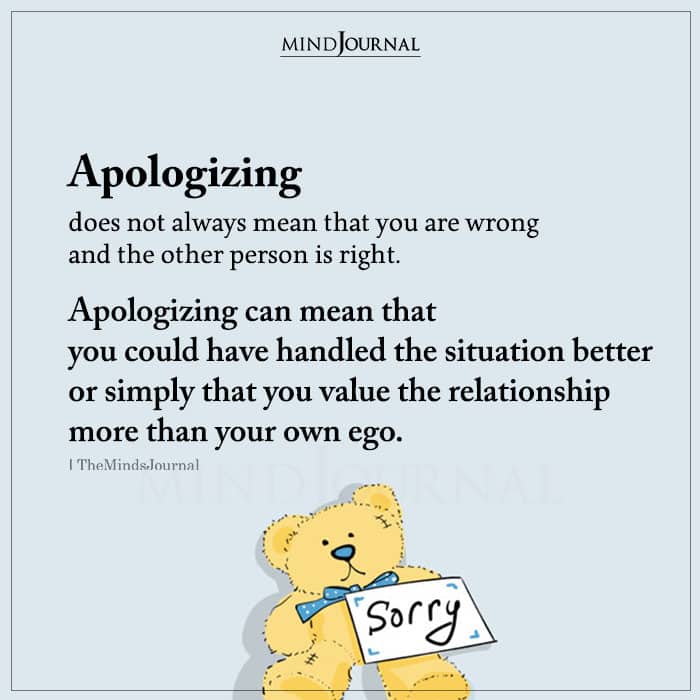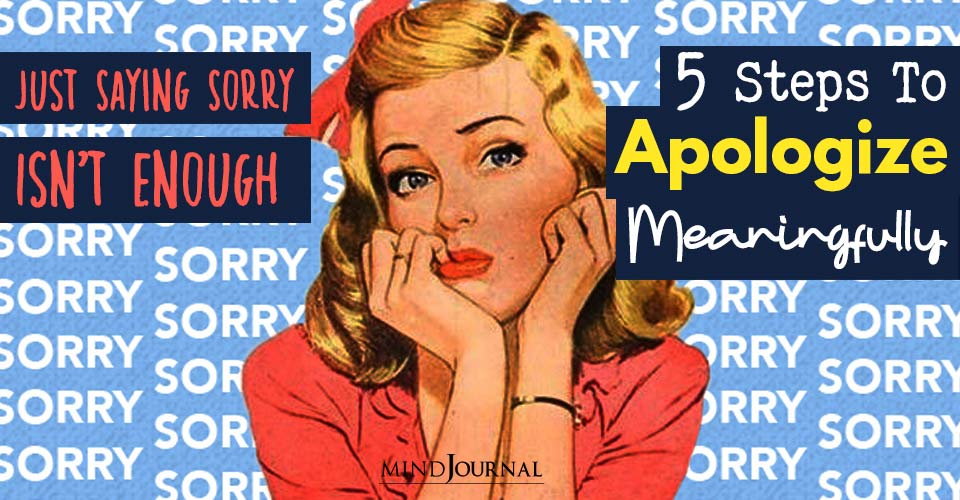Sometimes, saying magic words like “I’m sorry” isn’t enough. So how to apologize in a meaningful manner? Well, they say that the best apology is changed behavior and below are the steps on how you can achieve it.
Most of us don’t know how to make a real apology. That’s not surprising, because most of us have been taught from early childhood how to give fake apologies.
You probably first learned how to give an apology when you were playing in the sandbox. You bonked the kid next to you on the head with your plastic shovel, and instantly a nearby parent would tell you to “say you’re sorry”. Kids quickly learn that all they have to do is utter the magic words and all would be forgiven. Then you could get back to playing, and if you’re lucky you might even get a juice box.
Just saying “I’m sorry” isn’t enough.
When you are older, and begin to have serious relationships (work, friend, family, or intimate), you can’t help but sometimes hurt the people you’re closest to. It’s unavoidable. My wife and I’ve been together for 41 years, we get along incredibly well, and yet we still occasionally say or do things that hurt the other’s feelings. We can’t help it, we’re human. But we’ve learned, through hard experience, that a real apology goes a long way to repairing an injury.

As adults, we discover that the magic words aren’t helpful anymore; even when you regret your actions with all your heart. In fact, instead of making things better, saying you’re sorry sometimes seems to make everything even worse.
Related: Why Men Struggle To Apologize
The goal of the apology is NOT to get out of trouble or have the other person stop being angry at you. The goal is to mend a rift in your relationship. It’s as if the fabric of your relationship has been torn, and you are trying to sew it back together. To make the repair, you have to craft an apology that is both authentic to you and meaningful to the other person. It’s not enough just to show that you’re sincere when you apologize. The goal is to help mend the rift.
How To Apologize? 5 Steps To A Meaningful Apology

With my Couples Therapy clients, I stress that a meaningful apology has several parts, and each part is important in helping to heal the damage. Here are what I believe are the key steps to an effective apology. But apologies are hard, so I’ve also included the ways that people often unconsciously undermine their apology.
1. I was wrong
You start with a very clear admission that you made a mistake. This is a critical first step that shows you understand that what you did was wrong.
How people undermine this step: They try to justify their actions. They say something like “I didn’t really mean it”, “I said that because of what you did”, or “I was still angry over our last fight”. All these statements tell your partner “It wasn’t my fault”. And when you start an apology by saying it’s not your fault, it’s no longer an apology.
2. I see that I hurt you
Let them know that you see that your actions hurt them and that you don’t blame them for being upset.
How people undermine this step: It’s very painful when you hurt your partner, so people naturally try to minimize the impact of what they’ve done. People say things like “You’re overreacting” or “It wasn’t that bad” or “Your too sensitive”.
These are just ways people try and shift some of the blame to the partner. It is essentially saying “it’s your own fault for feeling hurt”.
3. I understand how you feel
Showing empathy for your partner is an important part of any apology. You show empathy by demonstrating that you can see things through their eyes and connect with how they feel hurt.
How people undermine this step: People argue about how their partner is interpreting what happened. Instead of trying to see it through their eyes, they try to convince their partner that they’re wrong.
They say things like “You shouldn’t feel like that”, “I wasn’t trying to hurt you”, or “You always twist things around”. Again, this is telling them they’re wrong to be upset. Not a good strategy.
Related: 5 Signs Of A Manipulative Apology – “I’m Sorry, But…”
4. I feel _______ (fill in the blank).
Along with showing that you understand how they feel, you need to communicate the pain that you experience when you see the hurt that you’ve caused them. For example, “I feel horrible when I see the pain that I’ve caused you”.

How people undermine this step: 1. They make it about their pain and take the focus off the injured partner. 2. They turn it into a play for sympathy from their partner. 3. They blame their partner for “making them feel bad”.
5. I won’t do it again
Make it clear that you’ve learned from this experience and that you are making a committed effort to not repeat your behavior. You don’t have to be perfect, but you have to make it clear that you’re really trying to change.
How people undermine this step: People make empty promises just as a way of appeasing their partner. But they don’t really make a sincere effort to change. Then, when they repeat the same action, the damage is much worse because now the partner is dealing with the pain of what happened and a feeling of betrayal. They feel like they must not be very important if their partner won’t even try to change.

A real apology creates a feeling of safety
It’s important to remember that your apology is an effort to restore your partner’s feeling of safety and trust in the relationship. When you hurt your partner, it makes him/her feel like it’s not safe to be with you. The apology is your effort to prove that you can and will take care of them. You are telling them that it’s important to you that they are safe.
This article was originally published on my blog: 5 Steps to a real apology.
We hope you make things right by these steps to a real apology. Let us know what your thoughts are in the comments below!
Written by: Jacob Brown Originally published on: Therapy, Adults, Seniors & Couples










Leave a Reply